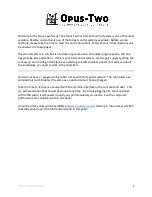
Naris
Naris
User’s
Manual V14 14/02/20 Page 16 of 52
HOW TO MAKE AND RECORD MEASUREMENTS
Two methods of acquiring data are provided within the Naris software: rhinomanometric
acquisition, and acoustic acquisition.
These are described separately in the sections below.
RHINOMANOMETER OVERVIEW
The measure of rhinomanometry or nasal airway resistance (R) depends on measuring nasal air
flow (F) and the pressure (P) producing that airflow:
Nasal airflow is collected by a mask, which must form an airtight seal around the face, and is
then passed out through a pneumotachograph head in which the flow is converted to a
pressure differential. This differential is transmitted to the NR6 by means of the tubes marked
with red and green bands.
Nasal pressure is the more difficult parameter to measure and this is done using one of two
standard techniques:
ANTERIOR TEST
(detailed on P12)
In the anterior test the black pressure tube is connected to one side of the nose while airflow is
measured through the other side, allowing for resistance to be calculated on that side. The
pressure tube is then moved to the second side, flow is recorded, and resistance is calculated
again. The two resistance values are then put into the formula below to calculate total
resistance:
The pressure connection to the nose is made by either:
•
a tip connector pushed through a small hole punched in microfoam tape, or a foam
insert
•
linked to the black pressure tube using anterior tubing and an anterior connector.
The reference pressure tube (blue) is connected to the mask.
It is essential that the pressure connection is airtight, and this should be checked by:
1)
Connecting the anterior tubing to the side of the nose which is not being measured
1 = 1 + 1
R TOTAL R LEFT R RIGHT
















































